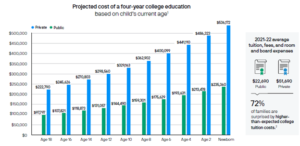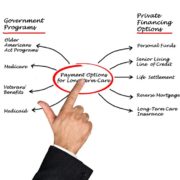The OBBBA (Signed into law: July 4, 2025) introduces the most sweeping federal tax changes since 2017. Many temporary provisions from the 2017 Tax Cuts and Jobs Act (TCJA) are now permanent, and new rules have been introduced that may affect your financial, charitable, and business planning.
Key Highlights at a Glance
• Makes many TCJA provisions permanent
• Raises the State and Local Tax (SALT) deduction cap (temporarily)
• Introduces new deductions (car loan, tips, overtime)
• Phases out several clean energy tax credits
• Increases estate/gift tax exemption
• Creates “Trump Accounts” for children
For Individuals & Families
Tax Rates & Deductions
• Tax Brackets: Unchanged; continue adjusting with inflation.
• Standard Deduction:
– $15,750 (Single)
– $31,500 (Married Filing Jointly)
– Adjusts annually for inflation.
Credits & Exemptions
• Child Tax Credit: $2,200 per child; up to $1,700 refundable; phase-outs at $200K/$400K.
• Other Dependent Credit: $500; nonrefundable.
• Personal Exemptions: Permanently eliminated.
Itemized Deductions
Charitable Giving
• 2026+: Only donations above 0.5% of Adjusted Gross Income (AGI) deductible.
• 60% AGI limit for cash gifts: Made permanent.
• Non-itemizers: Deduct up to $1,000/$2,000.
State and Local Tax (SALT) Deduction
• 2025–2029: Cap raised to $40,000 (from $10,000).
• Phaseout: Income $500K–$600K.
• 2030: Cap reverts to $10,000.
Pass-Through Entity Tax (PTET)
• Allows full SALT deduction at the entity level for qualifying business owners.
Mortgage Interest Deduction
• Limit: $750,000 in acquisition debt; $1M if grandfathered (pre-2017).
• Home equity loan interest: Permanently non-deductible.
Miscellaneous Itemized Deductions
• Permanently eliminated.
Limitation for High Earners (2026+)
• 37% bracket: Each dollar of deductions yields only $0.35 benefit.
• Does not apply to PTET-paid taxes.
New Deductions (2025–2028)
• Car Loan Interest: Up to $10,000 for U.S.-assembled vehicles.
• Tips Deduction: Up to $25,000; phases out at $150K/$300K.
• Overtime Deduction: Up to $12,500; same phaseout.
529 Education Savings Plan Enhancements
• Private K–12 and homeschool expenses: up to $20,000 (increased from $10,000).
• Credentialing expenses included.
Estate & Gift Planning
• Lifetime Exemption (2026+): $15M/person; $30M/couple; inflation adjusted.
• No changes to annual exclusion of $19,000 or direct pay rules for medical/education expenses.
Other Individual Provisions
• Age 65+ Deduction: $6,000 (2025–2028); phaseout at $75K/$150K.
• “Trump Accounts” for children:
- $5,000/year contributions; one-time $1,000 federal seed (2025–2028 births).
- Earnings grow tax-deferred, earnings taxable upon withdrawal at/after age 18.
- The account must be invested in a diversified investment fund that tracks a U.S. stock index, like the S&P 500.
We’ll share more as additional guidance becomes available in the months ahead.
Clean Energy Tax Credits – Repealed
• EV Credits: End Sept. 30, 2025.
• Residential Energy Credits: End Dec. 31, 2025.
• Fueling Infrastructure Credits: End June 30, 2026.
What’s Next?
Many of these provisions introduce opportunities for both immediate and long-term tax strategy planning. We recommend reviewing your financial plan with your HCM wealth advisor to take full advantage.
This material is general information only and is not intended to provide specific advice or recommendations for any individual. To determine what is appropriate for you, consult your tax professional.
For a comprehensive review of your personal situation, always consult with a tax or legal advisor. Hutchinson Capital Management (HCM) does not provide legal or tax advice. This information is not meant to be substituted for specific individualized tax advice. We suggest that you discuss specific tax issues with a qualified tax professional.
















